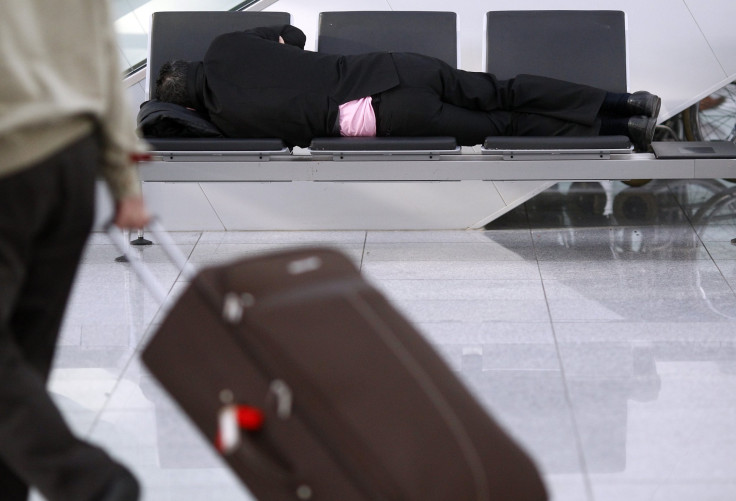A Cure For Jet Lag Could Be On The Horizon

What if you could travel from New York to Hong Kong, get out of the plane and head straight into a meeting without skipping a beat? This vision of a world without jet lag may become less of a fantasy and more of a reality in the coming years as scientists pinpoint what exactly it is that stops us from adjusting our body clock.
Researchers at the University of Oxford, University of Notre Dame and Swiss global health-care company F. Hoffmann La Roche, claim to have identified a mechanism that limits the ability of the circadian clock to adjust to changes in patterns of light and dark. The team, whose findings were published in the journal Cell on Friday, found that when they blocked the activity of this gene in mice, the creatures recovered faster from disturbances in their daily light/dark cycle that were designed to simulate jet lag.
Nearly all life on earth has an internal circadian body clock ticking 24-hours a day, synchronizing our routine of sleeping and eating within the cycle of light and dark. What the researchers sought to find out was what it is when we travel to a different time zone that limits us from adjusting to the local time by as much as one day for every hour the clock is shifted, resulting in days of fatigue and discombobulation for many.
“If you think about it, it makes sense to have a buffering mechanism in place to provide some stability to the clock,” explained Stuart Peirson, who led the team of researchers at Oxford University. “The clock needs to be sure that it is getting a reliable signal, and if the signal occurs at the same time over several days it probably has biological relevance. But it is this same buffering mechanism that slows down our ability to adjust to a new time zone and causes jet lag."
An area of the brain called the suprachiasmatic nuclei, or SCN, controls the circadian clock in mammals, and pulls every cell in the body into the same biological rhythm. A specialized system in the eyes, separate from the mechanisms used to see, senses the time of day by detecting environmental light before distributing this information to the SCN. Until recently, little was known about how light affected activity in the SCN to “tune” the clock, or why it takes us so long to adjust when our light cycles change.
Using mice to examine the patterns of gene expression in the SCN, Peirson and Professor Russell Foster, also of Oxford University, identified around 100 genes that were switched on in response to light, revealing the sequence of events that help “retune” the circadian clock. They found that one molecule in particular, SIK1, terminated this response and acted as a break to limit the effects of light on the clock. By blocking the activity of this molecule, the mice in the study were able to adjust faster to changes in the light cycle.
Foster, director of the recently established Oxford University Sleep and Circadian Neuroscience Institute, said that we’re still several years away from a cure for jet lag. “But understanding the mechanisms that generate and regulate our circadian clock gives us targets to develop drugs to help bring our bodies in tune with the solar cycle. Such drugs could potentially have broader therapeutic value for people with mental health illness.”
Foster noted that disruptions in the circadian system have also been linked to weakened immunity, impaired cognition and chronic diseases, including cancer, diabetes and heart disease. Such disruptions are also a common feature of mental illnesses like schizophrenia and bipolar disorder.
© Copyright IBTimes 2024. All rights reserved.












